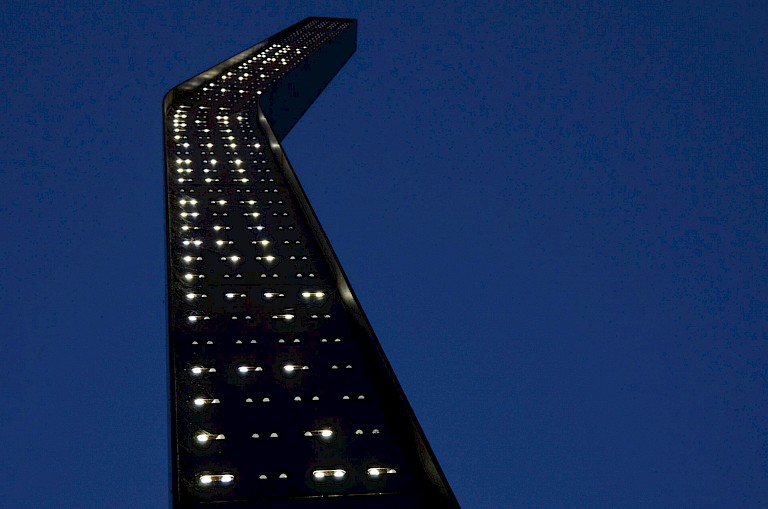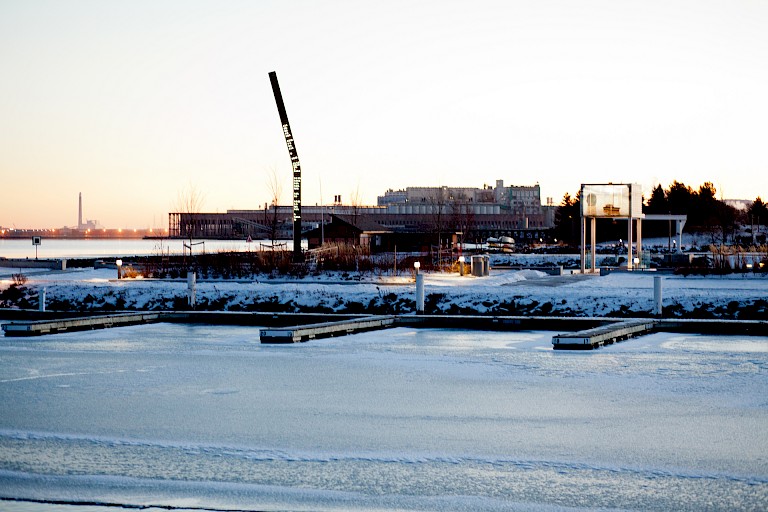



Residents and city administrators believe the artistic team achieved its goal. “It became the first work of art that, in the end, didn’t look like anything else which led to a host of other interpretations,” says Leah Bayly, Cultural Services and Events Coordinator for the city of Thunder Bay. “They look mysterious, unreal, like they aren’t even physically possible, and there is mystery and wonder at the Morse code messages in its cascading lights at night.”
Despite their large size and use of heavy, industrial materials, the sculptures—which are referred to by locals as “the beacons”—retain a feeling of intimacy and simplicity. The cascading lights, which can be seen across the waterfront park, draw viewers toward the piece. Once nearby, people are drawn even closer by the soothing audio. The piece encourages listeners to get closer and reflect on the ways that people have interacted with Lake Superior for thousands of years. Bayly adds, “Jiigew could not have been created anywhere else, or for any other community. It draws upon local Ojibwe culture, language, stories, local history and local geography. It fuses industrial design with human voices, the stories of the people that live in the region, told in the languages of those people.”
This new addition to Thunder Bay has stirred emotion and inspired dialogue in the community, prompting residents to talk about the nature of the project and the broader role of public art in the community, says Bayly. It has also helped residents “reawaken” to their skyline. Community members, who used to seeing the natural landmarks, unchanging shoreline, and old industrial relics—including a defunct grain elevator and historic iron ore dock—now have a beautiful, new focal point on the horizon. Situated among these other permanent pieces of the skyline, Jiigew symbolizes growth and revitalization in the city.
“Encompassing all that it does,” says Bayly, “Jiigew stands as a unique, interactive, and ultimately transformational work of art.”
All copyright belongs to Shanghai Academy of Fine Arts, Shanghai University.



